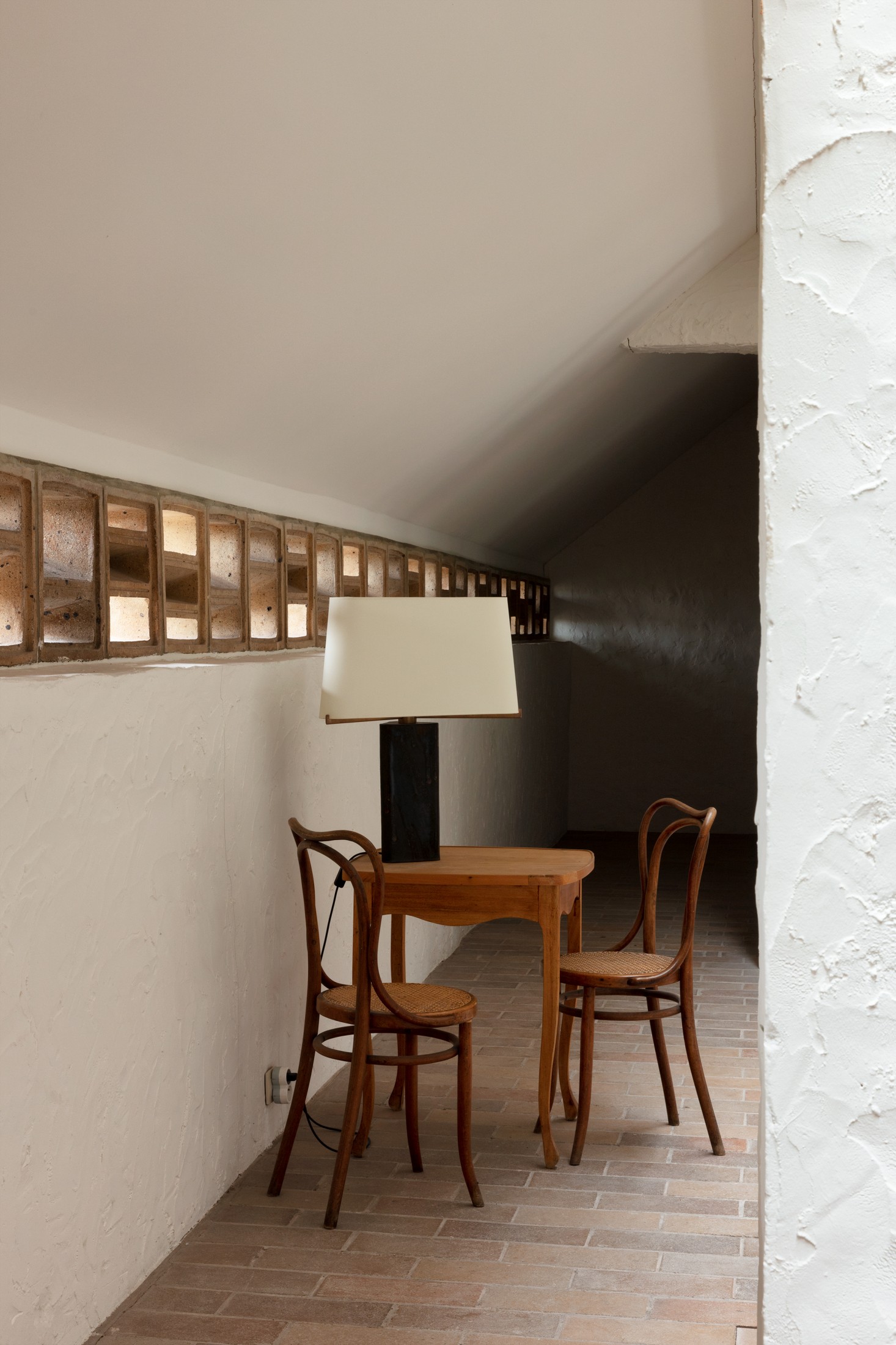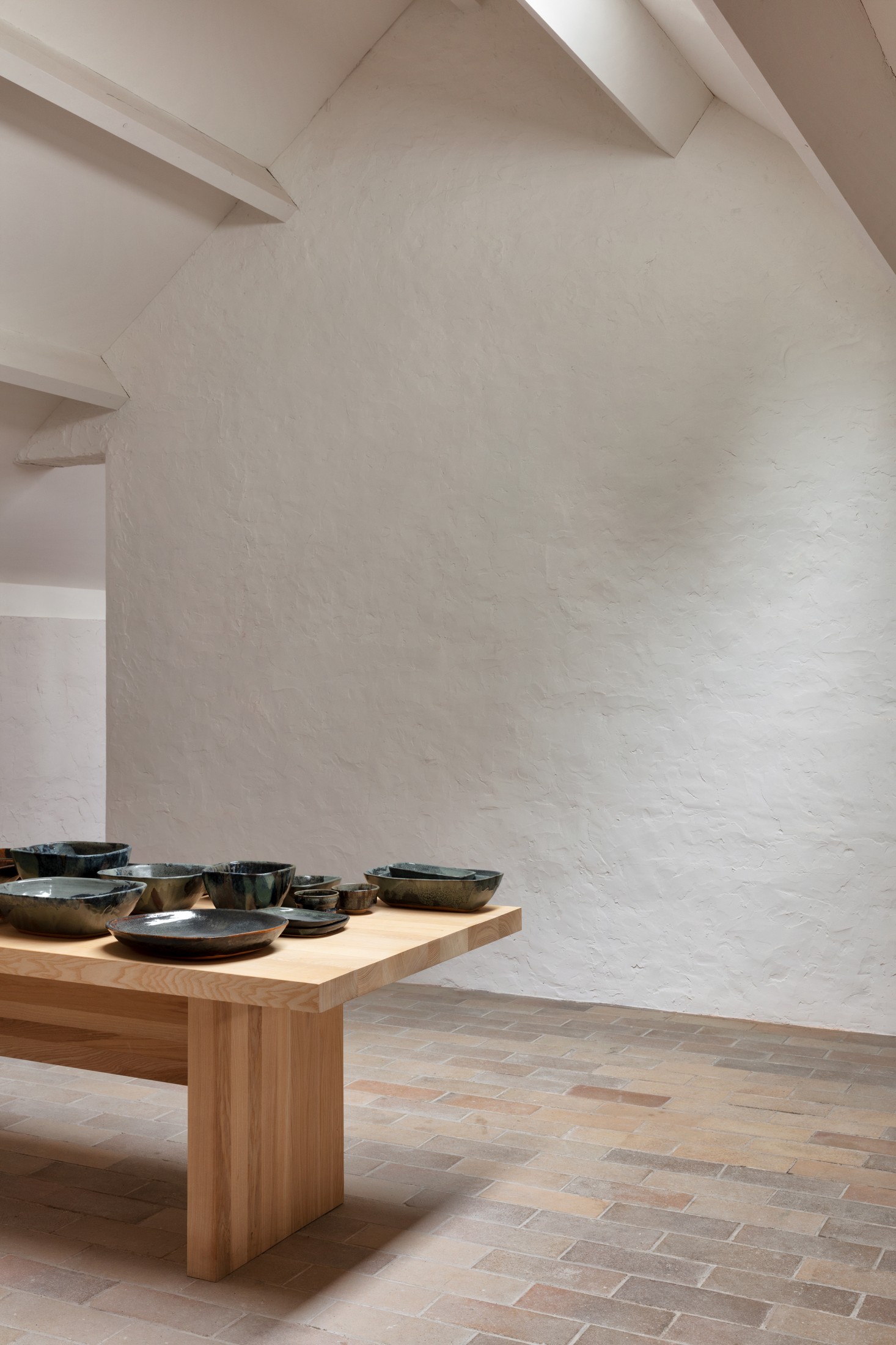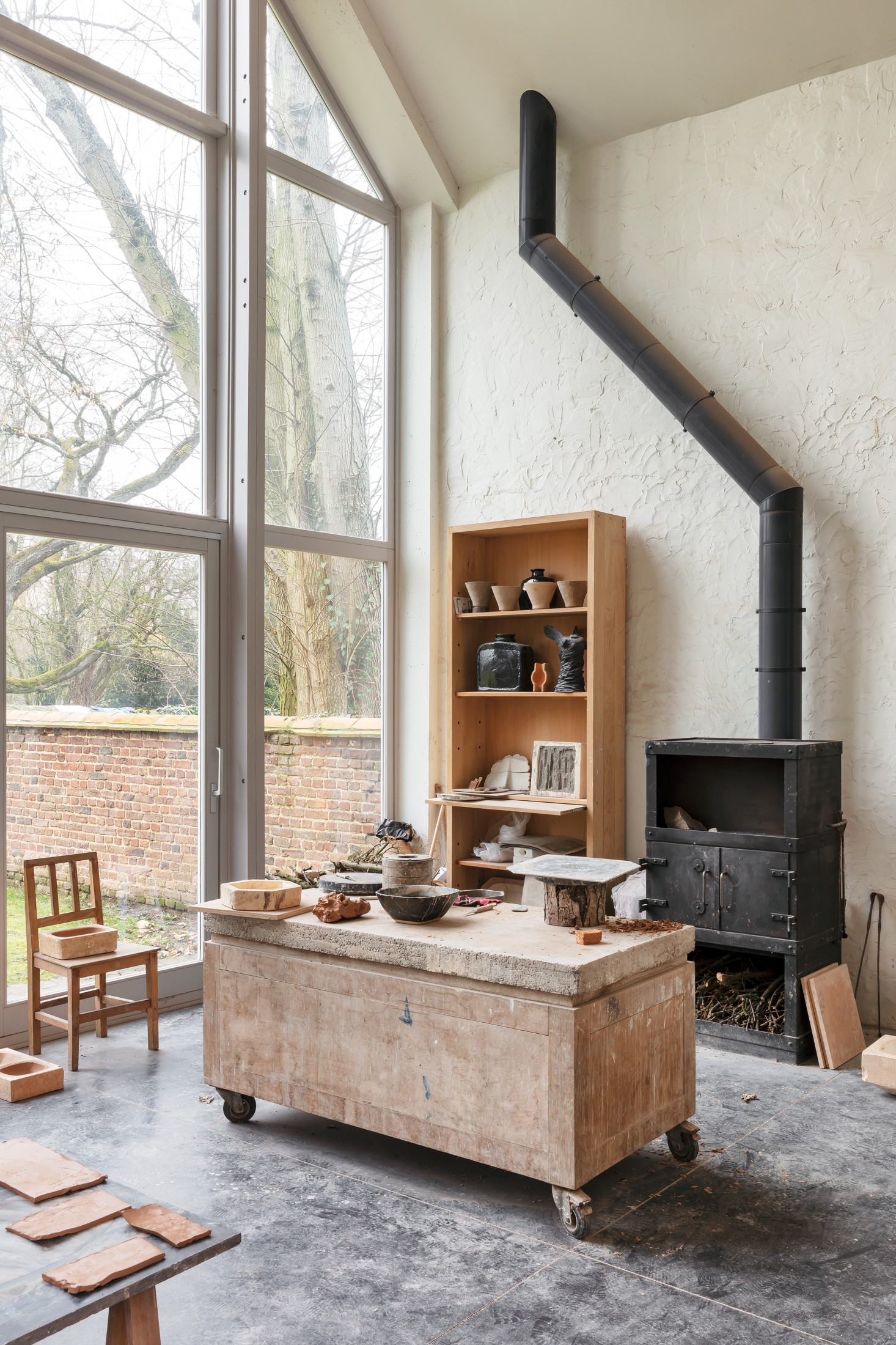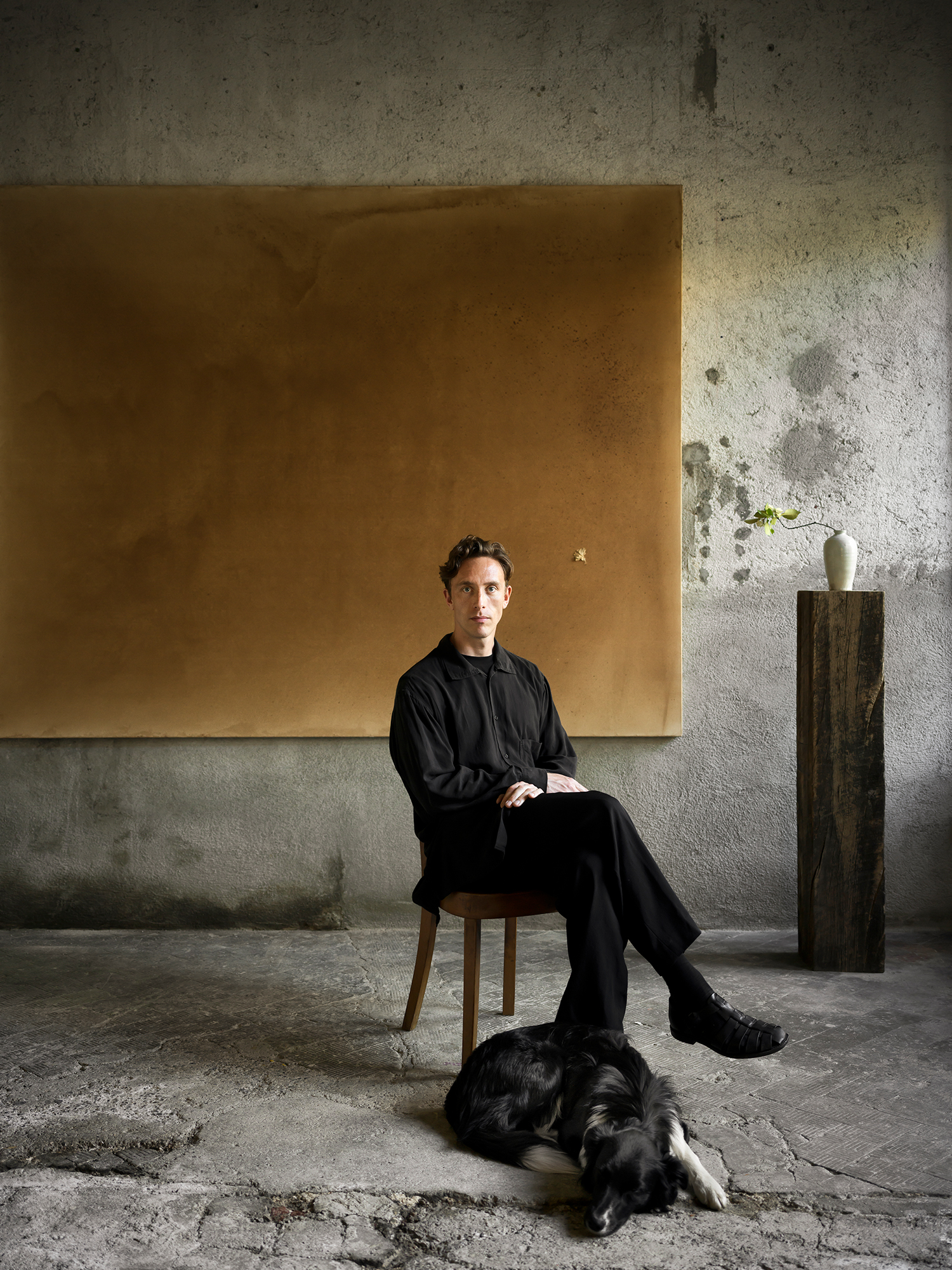
Rebirth from the earth
Under the impulse of his son Joseph, the studio of the Belgian master ceramist Pierre Culot (1938 - 2011) is getting a huge boost: the production has been restarted and an artist's residence has been opened. This is the story of the miraculous reincarnation in Roux-Miroir.
Imagine that your father was a beloved but controversial man. A man who wanted to squeeze every last drop out of life. A man of world fame, who at the same time struggled with his demons. "In that situation, you don't want to do what he does," says Joseph Culot, the son of the late Pierre Culot (1938-2011). Joseph didn't inherit a talent for ceramics from Pierre. But he now devotes much of his life to the legacy of his father.
Joseph and I meet in Roux-Miroir, 50 kilometres south of Brussels, a forgotten place between Leuven and Namur. The coffee is steaming in Pierre’s cups. The former studio home feels animated, that much is clear, even though the ceramist has been dead for 8 years. The sky is typical Belgian grey, the garden muddy. But in a strange way, all those shades fit well with Culot's work. In the kitchen there are bowls, plates and cups, but also some sculptural, stacked vases: the work for which he is best known. Culot's heyday was in the 70s and 80s, when he was the chou chou of the artistic beau monde of Brussels and far beyond. But during the last years of his life, it was remarkably quiet around the flamboyant clay artist. Until a Culot auction at Piasa in 2014 kissed the sleeping beauty back to life. The prices at the auction were remarkably high for the somewhat forgotten ceramist. However, the success made one thing very clear: there was and is renewed interest in Culot's work. Joseph felt that buzz too, but he did not feel ready to resuscitate his father's studio on his own. With the help of two friendly entrepreneurs from Brussels, Dimitri Jeurissen and Arnaud van Schevensteen, he eventually managed to do so.
Dreaming of a private museum
Living in the parental home was literally a bridge too far for Joseph. Roux-Miroir, the sleepy village where Culot had his studio home from 1964 until his death, is not a residence for an urban soul like him. But he drives to his father's former studio around three times a week. And he has a good reason for this: the studio is up and running again. The continuity is assured, because Pascal, the ceramist who had been working with Pierre since he was 17, has returned to work there. "He does not produce monumental sculptures, the likes of which only Pierre Culot could make. That would not be respectful towards my father and his collectors, "says Joseph. "Pascal makes functional ceramics such as bowls, plates and cups. They are marked "Atelier Culot" on the bottom, to make a clear distinction between original and posthumous production."
We walk around with Joseph in his parental home. Architecturally, the house is an elegant hybrid between 60s elements and an 18th-century farmhouse. The teddy bear in a chair, the pictures in the kitchen, the moulds in the atelier: everything is still there. It seems as if time stood still. As if Pierre Culot could walk in here at any moment. Even his books are still present. "Pierre was very eager to learn. Ever since he was a kid, he devoured books about the Etruscans, Romanesque architecture, the gardens of Le Nôtre, life in Versailles, you name it, "says Joseph. Of course, the house is also full of ceramics, perfectly arranged on robust wooden racks, also designed by Culot. Some pieces clearly bear Pierre’s signature, others are by befriended ceramists. "In total, I have found around 3000 pieces of ceramic in the house. From work by 20th-century ceramists such as Bernard Leach, Lucie Rie, Claude Champy, Michael Cardew, Shoji Hamada, Antoine de Vinck and Antonio Lampecco to anonymous pieces from Congo, Yemen or Germany. Pierre's big dream was to open his own museum, focused on his ceramic collection. He bought several houses here in the village to create such an exhibition space. He was constantly looking for money for that, but he didn't find it. And that often caused him problems, "says Joseph. "Together with an art historian, we are now documenting and archiving his entire ceramic collection. A massive undertaking, but the goal is: creating an exhibition with Culot's collection. I would like to let that expo travel. Preferably to the places where Pierre himself exhibited, for example the Stedelijk Museum in Amsterdam or Victoria & Albert Museum in London. Or in the countries where Pierre once worked or travelled to. "You can certainly call that plan ambitious. Culot travelled to Japan twice in the 70s to meet Shoji Hamada. But he also brought back pottery from Congo, where he was seconded as a paratrooper to the Belgian army in 1960. Culot became fascinated by the primitive beauty of the artisanal user-made ceramics, made by autodidacts.
Hergé present
Pierre Culot was not an autodidact. He learned the craft between 1954 and 1957 in the Maredsous Abbey School, where he was already known as a recalcitrant student. He also built up a reputation of impatient fellow at La Cambre in Brussels. "My father burned with ambition. But that was typical of that time: Belgium was experiencing an unprecedented boom in terms of architecture and (applied) art, in the run-up to Expo ’58. Pierre met my mother, Miche Wynants, a quiet children's book illustrator, who could control the loose cannon inside of him. In 1957, he was an apprentice to Antoine de Vinck, a Belgian master ceramist with a large international network. Culot became known to collectors for his sculptures in ceramics, often vases that hook into each other. Sometimes his formal language was also more abstract and more monumental. He received important commissions for public sculptures, such as his "Mur de pierre d'âge viséen" for the University of Liège or his "Porte de la Connaissance" in Uccle. In the garden in Roux-Miroir there is an impressive example of such an outdoor sculpture: a row of "brutal menhirs", who enter into a silent dialogue with the trees and the landscape.
In addition to making ceramics, Culot also had another special talent: he was an accomplished host, who perfectly mastered the art of entertainment. He could animate people like no other. "I have been to dinners here as a child. My earliest memory of Pierre is him dancing on the table," Dimitri Jeurissen once told us. Pierre was the man who turned Roux-Miroir into a place with a soul. The Brussels art world and the bourgeoisie were only too happy to come here to party and to buy ceramics. Hergé, the spiritual father of comic book hero Tintin, was often spotted there. But also Jules Wabbes, the Brussels designer who was – as a coincidence - also married to a children's book illustrator.
It is perhaps no coincidence that culot in French means "guts": Culot had it. When he turned to Bernard Leach for an internship at the age of 20, just after his ceramics training in Maredsous, he was by no means the only ceramicist who dreamed of that apprenticeship. But instead of waiting for the answer to his request - like everyone else - he asked Leach if he could come and work there. He initially refused, but his wife was charmed by the energetic Pierre. And so, he was able to work there for a while, alongside one of the most famous ceramists of the 20th century. Culot also had the guts to acquaint himself with the celebrities, like Richard Batterham and Patrick Heron, who came over to that studio in St Ives. "Pierre made international contacts there, which would be useful to him throughout his entire career," says Joseph Culot. "He was never a real career planner. He functioned more on intuition. But if a train passed that would help him in his career, he would jump on it without question."


Cadavre Exquis
Since the Culot – Jeurissen – Van Schevensteen train passed in Roux-Miroir, there has been a fresh vibe in the studio, which is still completely dans son jus, as the French put it so nicely. In order to not turn into a static mausoleum of Pierre, Dimitri Jeurissen launched the plan to activate the studio with an artist residence. "The idea is to invite an artist who creates new work in Pierre's studio," says Joseph. "We deliberately give artists the opportunity to approach ceramics in a totally different way than Pierre." The first resident was an instant hit: Eric Croes. The young Brussels resident makes figurative ceramics with a surreal twist. His totem poles, nest boxes, reliefs, furniture, sculptures and lamps are associative trips of a creative mind without limits. Croes was noted in the Belgian art world with his crazy ceramic "ABC". In 26 sculptures, one for each letter of the alphabet, he combined elements that started with the same letter. From "Pied" (foot), "Plume" (pen), "Poisson" (fish), words that all start with a P, he made an associative foot-fish-pen vase. His method is reminiscent of the cadavre exquis concept of Yves Tanguy and Jacques Prévert from 1925. Poets or artists then complemented each other's work, resulting in a spontaneous creation full of non-sense. That figurative and narrative element is totally absent in Culot's ceramics. And that made the first residency so interesting: it was so radically different that it gave a new energy to the studio.
The second residents were Daniel Dewar & Grégory Gicquel: a Franco-British duo of ceramic artists, who had already more international fame than Eric Croes. In 2012, they won the Marcel Duchamp Prix and since then, they have already exhibited at Musée Rodin, Centre Pompidou, Palais de Tokyo and collaborated with top gallery C.L.E.A.R.I.N.G. from New York / Brussels. They share their anarchy and love of handicraft with Eric Croes. But the 12 pieces that they made in Atelier Culot were of a completely different calibre. "That's the thrilling part," says Joseph Culot. "It makes no sense to invite artists who work in Pierre's style. I just want to explore new horizons with the residencies."
Claustra
Joseph Culot, Dimitri Jeurissen and Arnaud van Schevensteen are bursting with ideas to stir up the fire in Atelier Culot. But they want to take their time. "Little by little, we want to unload products that Pierre once designed. His wooden racks, which are located here in the studio, can already count on much enthusiasm. Studio KO from Paris, known for their design of the Yves Saint Laurent Museum in Marrakech, has already placed an order for Pierre’s lamps in ceramic. And Pierre’s side tables in natural stone are in production again, in collaboration with natural stone specialist Van den Weghe. And not to forget, his claustras: sculptural open window frames in ceramics. In Roux-Miroir, Culot integrated them into his studio. But you can also create an airy terrace wall with it, as you often see in southern countries. "We're not in a hurry, we'll see where we end up, revitalising the atelier," says Joseph Culot. "I feel that we are just at the beginning of a long story, in the spirit of my father. But we want to tackle it more thoughtfully than him. He was a bit too impulsive."
www.atelierculot.com





